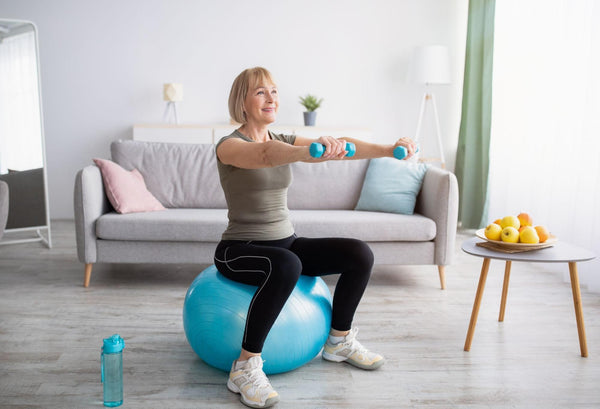Preventing Osteoporosis
Osteoporosis, often called “The Silent Disease,” is characterized by weakened bones prone to fractures. If you would like to know what you can do NOW to help prevent osteoporosis, here are seven strategies. We’re betting that you’ve heard these before. They feel like no-brainer suggestions, but they’re what works.

Eat a Calcium-Rich Diet
Calcium is critical to bone health. Eat calcium-rich foods like dairy products, leafy greens, and calcium-fortified foods.
Get Lots of Vitamin D
To absorb as much calcium as possible, get plenty of Vitamin D. Get Vitamin D from sunlight and supplements.
Get Regular Exercise
Weight-bearing exercises like walking, jogging, dancing, and resistance training help stimulate bone formation and prevent bone loss.
Avoiding Smoking and Excessive Alcohol
Don’t smoke. Drink less. Both contribute to poor bone health.
Test Your Bone Density
If you are going through menopause or have genetic risk factors for osteoporosis, regular bone density testing could be a good idea. These are usually called DXA or DEXA scans. You can take preventive measures once you know if you’re at risk.
Consider Medication
There are medications available to prevent or treat osteoporosis. Discuss the risks and benefits of osteoporosis medications with your healthcare provider.
Prevent Injuries
Injuries can contribute to osteoporosis. Minimize fall risks by improving lighting at home. Remove tripping hazards, use assistive devices if necessary, and maintain regular vision and hearing check-ups.

Treating the Pain of Osteoporosis
If you’ve got osteoporosis, you’ve probably also got pain. Here are some ways to limit osteoporosis pain and improve overall well-being. Keep your eyes open. We snuck a recommendation to use our effective pain patches in this list.

Take OTC Pain Medications
Over-the-counter options like acetaminophen and NSAIDs (like Ibuprofen) can help reduce mild to moderate pain. Use these carefully because OTC medication can be misused.
Take Prescription Medications
Medical practitioners often recommend opioids or muscle relaxants for short-term pain relief. These types of medications are typically reserved for severe pain and should be used under close supervision due to the risk of dependence and other adverse effects.
Get Physical Therapy
Physical therapy can improve strength, flexibility, and posture. Strengthening exercises, gentle stretching, and posture correction techniques can help alleviate pain, improve mobility, and reduce the risk of falls.
Use Assistive Devices
Canes, walkers, or braces can provide support and stability, especially during activities that exacerbate pain or increase fall risk. Additionally, ergonomic adaptations at home, such as grab bars in the bathroom or handrails on stairs, can improve comfort.
Modify Your Lifestyle
Maintain a healthy weight, quit smoking, limit your alcohol intake, and adopt proper body mechanics to reduce strain on bones and joints to reduce osteoporosis pain. Make sure you get plenty of calcium and vitamin D.
Try Complementary Therapies and Alternative Remedies
Complementary therapies like acupuncture, massage, and yoga are potential options for managing osteoporosis pain. Alternative pain relief solutions like The Kailo Pain Patch are worth investigating and have thousands of satisfied users.
Get Psychological Support
Living with chronic pain can take a toll on mental well-being. Support groups, counseling, or relaxation techniques like meditation and deep breathing can help. Developing coping strategies and maintaining a positive outlook can improve resilience and overall quality of life despite the challenges of managing osteoporosis pain.
Disclaimer: Kailo should not be used if you have a pacemaker or are pregnant. Always consult your doctor or health care professional before using Kailo.





